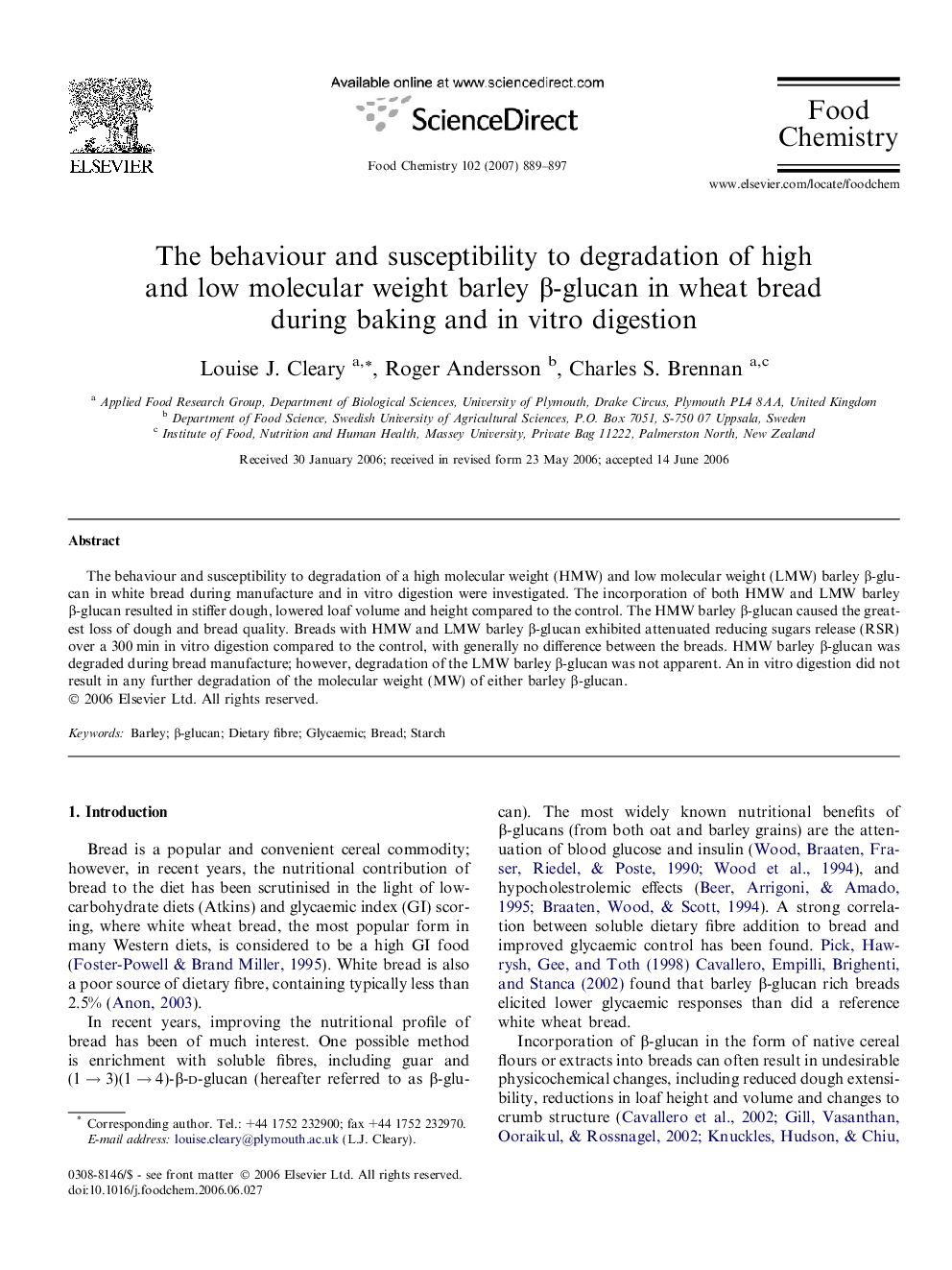| Article ID | Journal | Published Year | Pages | File Type |
|---|---|---|---|---|
| 1190069 | Food Chemistry | 2007 | 9 Pages |
The behaviour and susceptibility to degradation of a high molecular weight (HMW) and low molecular weight (LMW) barley β-glucan in white bread during manufacture and in vitro digestion were investigated. The incorporation of both HMW and LMW barley β-glucan resulted in stiffer dough, lowered loaf volume and height compared to the control. The HMW barley β-glucan caused the greatest loss of dough and bread quality. Breads with HMW and LMW barley β-glucan exhibited attenuated reducing sugars release (RSR) over a 300 min in vitro digestion compared to the control, with generally no difference between the breads. HMW barley β-glucan was degraded during bread manufacture; however, degradation of the LMW barley β-glucan was not apparent. An in vitro digestion did not result in any further degradation of the molecular weight (MW) of either barley β-glucan.
